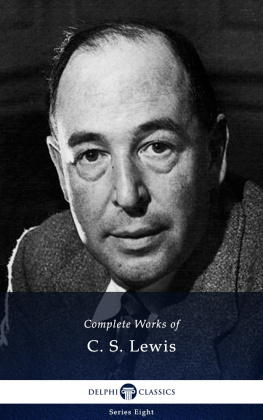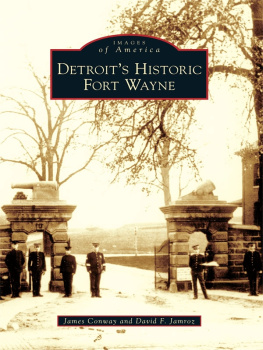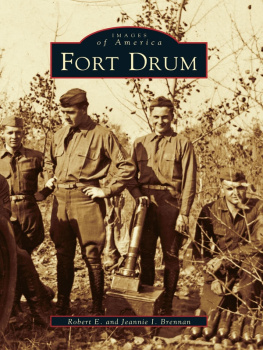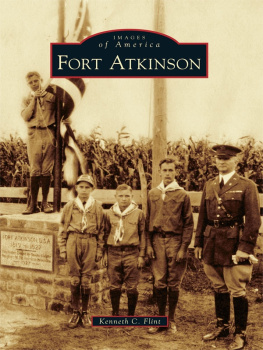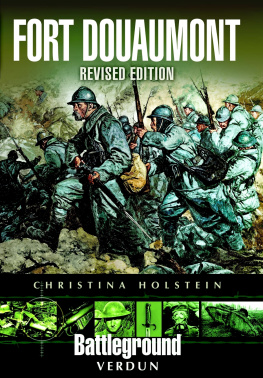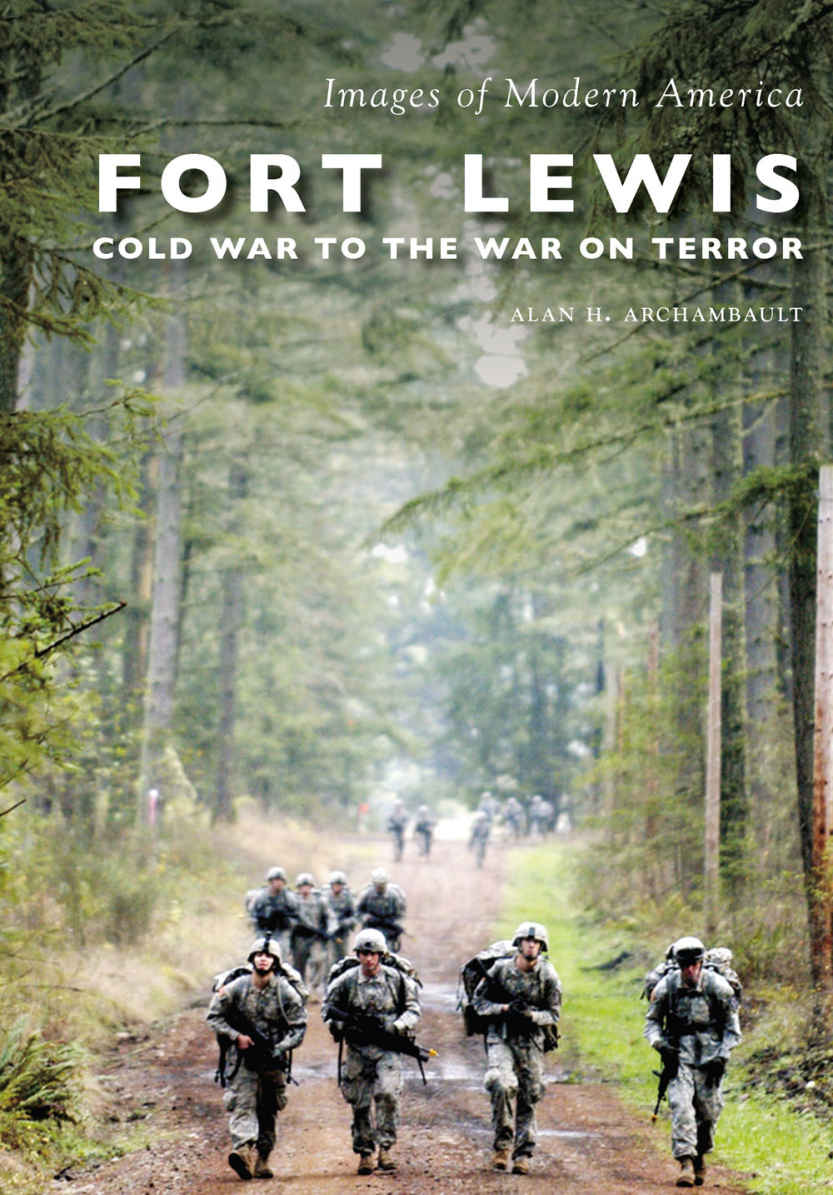Images of Modern America
FORT LEWIS
COLD WAR TO THE WAR ON TERROR

This is an aerial view of the main post area of Fort Lewis from about 1970. Watkins Field, the main parade ground, is at the center of the photograph, and the 91st Division Monument and the quarters of the posts senior officers are at the lower edge of the field. (US Army.)
ON THE FRONT COVER : Fort Lewis soldiers are on a road march in 1993. Evergreen trees have provided a lush landscape for troops training on the post since 1917. (US Army/Lewis Army Museum.)
UPPER BACK COVER : The main gate of Fort Lewis was constructed by the civilian workers who built the camp in 1917 as a gift to the Army. The gate represents the frontier Army heritage of the region. (US Army/Lewis Army Museum.)
LOWER BACK COVER (from left to right): Soldiers of the 9th Infantry Division training on Fort Lewis in 1974 with Mount Rainier in the distance (US Army/ Lewis Army Museum.); Soldiers of the 1st Special Forces Group conduct a change of command ceremony around 2006. (US Army/ Lewis Army Museum.); Members of the Womens Army Corps Company pose for a photograph on Fort Lewis in 1974. (US Army/ Lewis Army Museum.)
Images of Modern America
FORT LEWIS
COLD WAR TO THE WAR ON TERROR
ALAN H. ARCHAMBAULT

Copyright 2016 by Alan H. Archambault
ISBN 978-1-4671-1556-8
Ebook ISBN 9781439655672
Published by Arcadia Publishing
Charleston, South Carolina
Library of Congress Control Number: 2015954263
For all general information, please contact Arcadia Publishing:
Telephone 843-853-2070
Fax 843-853-0044
E-mail
For customer service and orders:
Toll-Free 1-888-313-2665
Visit us on the Internet at www.arcadiapublishing.com
This volume is dedicated to the men and women of the US Army, past, present, and future .
CONTENTS
ACKNOWLEDGMENTS
The photographs and graphics reproduced in this book were selected from the collections of the Lewis Army Museum, formerly named the Fort Lewis Military Museum. The collection is a wonderful resource that preserves the legacy of the men and woman who have served on the post since 1917. Credit is due to the military and civilian photographers who captured these wonderful images and the kind and generous donors who ensured that these photographs were placed in the collections of the museum. A special acknowledgement is due the staff of the Northwest Guardian newspaper, who ensure that the museum receives digital copies of their photographs and stories in order to preserve them for future generations.
I would also like to thank and acknowledge the contributions of my friends and colleagues who supported the preparation of this volume. First of all, I appreciate the active assistance of the museum staff: Erik Flint, museum director and Army veteran of the War on Terror, reviewed the text for historical content. Heidi Pierson, the curator of collections, and Synthia Santos, historian and archivist, were essential in providing access to the images and archival materials required to complete this project. Dedicated museum volunteers Erin Bolliger and Catherine Bander provided kind assistance on this project and so many others.
The Friends of the Fort Lewis Military Museum are a key partner in the success of the Lewis Army Museum. As usual, the friends supported this project to preserve the history of the installation and our troops. I particularly wish to mention the members of the executive board of the Friends of the Fort Lewis Military Museum: Col. (Ret) Ian Larson, Lt. Col. (Ret) Thomas Morgan, Joseph Koczur Jr., Lt. Col. (Ret) Donald Simpson, Lt. Cmdr. (Ret) Caroline Flint, Sgt. Maj. (Ret) Harry Schreiber, Col. (Ret) Paul Knoop, Col. (Ret) Patrick Powers, and Capt. Kristy Moore.
Finally, I would like to acknowledge the great work of Army photographers and journalists that record the exploits of the Army on a daily basis.
INTRODUCTION
Since Camp Lewis was established in 1917, the installation has been at the forefront of training Americas soldiers to protect the United States and our interests around the world. From the trenches of the western front in France to the islands of the Pacific and the sands of the Middle East, the soldiers who trained at the Evergreen Post on Puget Sound have made a tremendous contribution to our national defense. Their story is now forever linked with the military history of the United States and the entire world.
This volume covers the story of Fort Lewis from 1956 to 2010. During that time period, many units passed through the post, and the focus of the training changed to meet the various challenges and threats around the world. But the mission remained constant: to train men and women of our nation to be the best soldiers possible.
By 1956, Fort Lewis was firmly established as an important Army installation. Camp Lewis, which trained soldiers for World War I, had become a permanent post in 1927 and was given the name Fort Lewis. During World War II, the fort had been instrumental in the defense of the West Coast and trained many units, from companies to divisions, and sent them to combat in all theaters of the war. In 1947, the 2nd Infantry Division was posted to Fort Lewis, and when the Korean War began, the division was considered the most combat-ready unit in the Army and sent to stem the North Korean onslaught.
Following the Korean War, the 4th Infantry Division arrived on post. At first, they trained for possible conflict with Communist forces in Europe, but as the war in Southeast Asia escalated, they began to train to fight an insurgency in a jungle environment. In 1966, the 4th Infantry Division was sent to Vietnam, where they put the training to good use. Fort Lewis was then designated a US Army training center and conducted basic and advanced infantry training to over 350,000 soldiers. In addition, a personnel center was established, which processed soldiers to and from Alaska and Asia.
Following the end of Americas involvement in Vietnam, Fort Lewis became the home to the 9th Infantry Division. When the division was selected to become the Armys only motorized division, Fort Lewis became associated with new and innovative concepts in warfare. New vehicles, weapons systems, and tactics were tested on the post. In 1981, the I Corps Headquarters was activated on Fort Lewis with a wide area of responsibility throughout the United States and Asia.
When the 9th Infantry Division was inactivated in 1991 due to defense budget cutbacks, Fort Lewis continued to provide quality training for thousands of soldiers. In 2000, the post became the focus of the Armys transformation program. After the United States was drawn into the War of Terror, Stryker Brigade Combat Teams were formed, trained, and deployed from Fort Lewis.
In 2010, in response to a directive from the Base Realignment Commission, Fort Lewis and McChord Air Force Base joined efforts and became Joint Base Lewis-McChord. Although the installation had a new name, its third name in almost 100 years of service, Joint Base Lewis-McChord continues to provide excellent training to the defenders of freedom.
One
A LEGACY OF SERVICE



